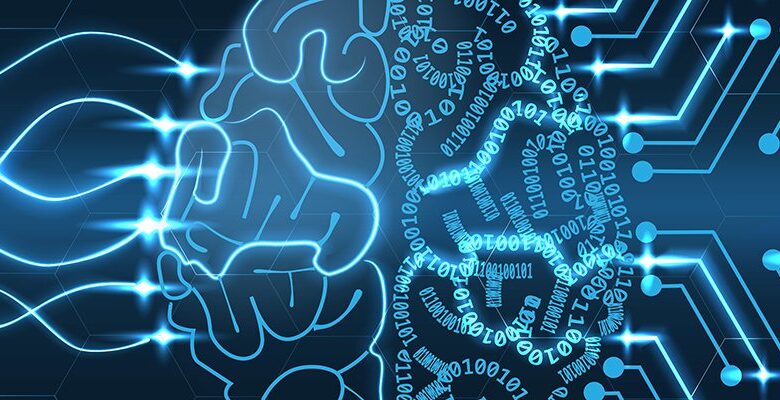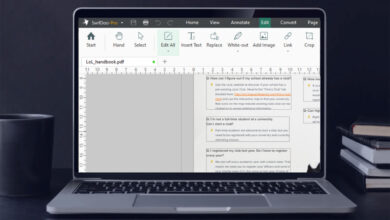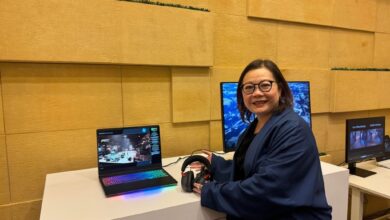Forrester: Preparing for the era of the AI PC

PC manufacturers are gatecrashing the artificial intelligence industry party. There are now a number of devices that incorporate AI acceleration hardware
By
- Andrew Hewitt
Published: 27 May 2024
Artificial intelligence (AI) on the personal computer (PC) was a central focus of the 2024 Consumer Electronics Show (CES) in Las Vegas earlier this year. PC and chip manufacturers such as AMD, Dell, HP, Lenovo, Intel and Nvidia announced AI PC innovations to come in the so-called “year of the AI PC”.
Approximately 50 models of AI PCs are available for purchase today, and multiple AI chips are ready for enterprise deployments. Forrester expects certain roles with high computing needs, such as creatives, data scientists and developers, to benefit substantially from AI PCs.
While employees have run AI on client operating systems (OS) for years – think background blur or noise cancellation – most AI processing still happens through cloud services such as Microsoft Teams.
AI PCs are now disrupting the cloud-only AI model to bring that processing to local devices running any OS. But what is an AI PC exactly? Forrester defines an AI PC as a PC embedded with an AI chip and algorithms specifically designed to improve the experience of AI workloads across the computer processing unit (CPU), graphics processing unit (GPU) and neural processing unit (NPU).
Following the release of ChatGPT in November 2022, the prospect of the AI PC – one that would take advantage of the immense opportunity of generative AI (GenAI) as well as other types of AI – quickly gained attention as leaders sought ways to bring AI to every employee, on every endpoint, across every organisation.
The AI PC has captured the imagination of the industry. Such devices promise to supercharge employee productivity. IT and business leaders foresee many use cases for GenAI, from content creation, to meeting transcription, to code development.
AI PC user benefits
While corporate-approved GenAI applications, such as Microsoft Copilot, often run as cloud services, running them locally enables them to interact with local hardware, such as cameras and microphones, with less latency. There will be opportunities for software developers to use AI chips in PCs to enable new use cases, especially for creatives.
For example, open source music production software company Audacity is working with Intel to deliver AI audio production capabilities for musicians, such as text-to-audio creation, instrument separation and vocal-to-text transcription.
In another example, photo and video enhancement software provider Topaz Labs is now enabling users, via AMD’s Ryzen AI, to run powerful AI video and picture enhancement features on local PCs much faster than they could four years ago on GPU-enabled desktops.
An AI PC also offers a way to improve the collaboration experience. Dedicated AI chipsets will improve the performance of classic collaboration features, such as background blur and noise, by sharing resources across CPUs, GPUs and NPUs. On-device AI offers the ability to render a much finer distinction between the subject and the blurred background. More importantly, the AI PC will also enable new use cases, such as eye contact correction, portrait blur, auto framing, lighting adjustment and digital avatars.
Another benefit of AI chipsets on PCs is that they provide the means to optimise device performance and longevity. Previous AI use cases were feasible on PCs, but they drained the battery quickly. The addition of an NPU will help preserve battery life while employees run sustained AI workloads. Component monitoring for clock speeds, fans or thermals will feed AI algorithms on the device to optimise its performance, reduce breaks and extend PC life. Running models locally will also reduce latency compared with cloud-hosted versions and enable employees to access them without an internet connection.
Other benefits include the ability to deliver personalised computing and support employee wellness. AI PCs will get to know a user’s preferences and behaviours over time and adjust accordingly. They will be able to understand personal traits like accents and speech patterns through microphones to create more accurate email responses. They will also have the ability to learn individual productivity preferences, such as filtering out notifications and distracting content while a developer is trying to code or alerting a salesperson when a high-value prospect emails back. Forrester believes the AI PC will even provide suggestions to users on how best to structure their day to support optimal productivity.
In terms of employee wellness, the Forrester workforce survey, 2023 reported that 68% of workers who use a laptop at least weekly for work agree that they would benefit from a device that includes wellness features. Features such as anti-blue-light displays, light-dimming effects that mimic circadian rhythms and greyscale colour schemes that limit exposure to harmful light have been around for years, but AI will supercharge these effects with features such as suggesting ergonomic adjustments based on meeting posture, prompting employees to take stretch breaks, and automatically transcribing voice to text for those with hearing impairments.
AI PC adoption predictions
While the employee benefits of the AI PC are intriguing, they are not enough to convince IT purchasers to go all-in on AI PCs. Why? Because IT administrators do not make purchasing decisions about PCs based purely on their experience impact. Compatibility does drive PC purchasing and affects experience, but economic, privacy and security considerations play a larger role in AI PC purchasing.
Data privacy and security are top concerns for GenAI, and 55% of privacy decision-makers indicate that their organisation is developing privacy controls and policies for GenAI. The AI PC will give employees more control over what data stays local and what gets sent to the cloud. This will help avoid issues such as the use of personal data to train AI systems, copyright infringements and patent violations.
A recent Cisco study revealed that one in four organisations had banned the use of GenAI for privacy reasons. Local AI could also make employees more willing to accept personalisation use cases. For example, AI cameras could alert an employee when someone is looking over them while they’re on calls.
Running AI in the cloud is notoriously expensive. Consider the story of Latitude, an AI gaming startup that found its cloud costs skyrocketing in 2021 to nearly $200,000 a month when its AI Dungeon game became more popular. It’s not just cloud consumption costs, either – hardware, software and labour also increase cloud AI costs. These will only increase as users continue to utilise cloud iteratively through bring-your-own AI) tools and company-owned GenAI.
IT organisations will embrace AI PCs because running these models locally will reduce cloud costs significantly. An AI PC ranging from $1,000 to $3,000 per device, plus its associated software, costs pennies compared with hosting and running AI models in the cloud. This is a major reason why Apple and Samsung have pushed GenAI to the forefront of their operating systems.
Forrester forecasts that AI platform budgets will triple in 2024 to meet the demand for GenAI applications. Enterprise workloads will be cloud-dependent, which will increase usage bills for customers on public cloud services. This will provide an opportunity for digital workplace leaders to save cloud costs by pushing AI workloads to the PC. However, for most information workers, there simply aren’t enough game-changing applications for day-to-day work to drive rapid AI PC adoption.
This article is based on an excerpt of Forrester’s “The year of the AI PC is 2025” report, by principal analyst Andrew Hewitt, with Glenn O’Donnell, JP Gownder, Paddy Harrington, Paige Ludl and Frank Harris.









